It all started with the fish. It was Saturday, the best day for cooking fish in our house, as we are usually all at home without other obligations. I had wanted to cook some salmon with fennel flavoured with an ouzo sauce, a dish I had come across in my blog readings. The combinaton of fennel and salmon was a match made in heaven, one of my friends had told me recently. So off I went to the fish market in search of some salmon.
It was not the best day forbuying fish though. The weather was too rough for fishing, and very little fresh fish had been brought in to the markets. All the fish shops seemed to be selling yesterday's catches, judging from the amounts of each variety found in their display, and it was early morning. The salmon was priced at 14 euro a kilo, but the pieces were not cut evenly. Some slices were from the tail end - thick but small - while others were misshaped into squares; there was no way of knowing how many days they had been in the fridge.
My attention was caught by the skate wings. I had once seen a skate (σαλάχι) being caught at the beach. This was the most plentiful fish at the fishmonger's this morning: 10 euro a kilo. The pieces looked large and filling, with the added bonus of having no sharp bones, just some soft bone cartilage that can easily be removed and doesn't cause pain on biting.
I had plenty of fennel at home; the stalks with their willowing fronds are a common feature of the Cretan countryside. But the bulbs are not grown for retail selling in Greece. All the fennel bulbs I have ever used in my cooking (and always with seafood, especially cuttlefish) have been grown by relatives who have an interest in cultivating foreign vegetables, but only for their own consumption. I would have to buy imported fennel to try this dish, even though I knew that their seasonal quality would be compromised. Another nagging feeling in my mind was the fact that in the same week, I had already bought some celeriac (celery root) to make another foriegn-inspired dish, and I felt that it would weigh down unnecessarily to my carbon footprinting of the world. I decided to make do with what ingredients I had on hand and decide how I could best substitute the various items once I got back home.
Apart from the celeriac and some carrots, my fridge was holding a hoard of leafy herbs and greens, that I had forgotten to turn into marathopites (vegetarian fennel pies) during the week. I set aside the fish and made piles of all the greens on the kitchen work top.Then I went down to the herb garden my mother-in-law tends and picked some fresh fennel weed and mint, and chopped off some of the leafy green tops from the onions and garlic that she had also planted. The fish, I decided, needed less preparation time, so I set to work on the greens, cleaning them, drying them well (they shouldn't be too damp when adding to a pie), and chopping them into a bowl. It's hard to keep track of the quantities of each ingredient. Ultimately, it boils down to what you have on hand, and how much you have to use up; your pies will take on the flavour of the most powerful ingredient in the mixture.
I'm not a great fan of making pastry, but since it was Saturday and I didn't manage to buy any from my favorite pastry maker int he town, I had to roll my own. It's a messy job and your hands get very sore when using a rolling pin. It's not a job you can do on a regular basis if you are often away from home. The good thing about home-made pastry is that it keeps in the fridge for two days, and you can break off as much as you need to use on one day, and keep the rest refrigerated if you don't have time to roll and fill pastries on the same day (I find it very tiresome and repetitive work). With a weary heart, as I thought about the time racing away and Saturday's lunch meal that still had not been cooked, I got the pastry going.
You need:
a glass of water
a small wineglass of olive oil
a nip of tsikouthia (Cretan alcoholic drink - ouzo can be used instead)
a pinch of salt
a kilo of flour (I use organic flour, Limnos flour and/or a special blend made by Miloi Kritis for pie-making)
Place all the ingredients in a bowl and mix them lightly with a spoon. Then start adding the flour, by pouring three cups in the liquid all at once. Mix well, and keep adding flour, this time at the rate of 1/2 a cup, and mix it in until the mixture stops looking like a batter, and more like dough, which can be kneaded in the bowl without your hands getting bits of it stuck onto your hands. When the dough looks as though it has the right consistency, tip it onto a floured surface and knead it well so that it looks like an evenly shaped ball of dough. You may not need to use all the flour. This dough will yield 25-30 small rounds of pastry.
At this stage, the dough can placed back in the bowl and covered with a towel until you are ready to use it. It will keep out of the fridge overnight in cool temperatures. At this stage, my dough becomes soft and easy to roll out. If I don't use it immediately, I place it in a plastic bag and put it in the fridge, along with the pie filling - and try to remember that I must use both of them up in the next two days...
*** *** ***
Once some space had been cleared, I looked at the original fish recipe again. It was a very uncomplicated recipe. The butter would have to be omitted, since we only use olive oil in our cooking. Butter gives a different texture to food, but I have long learned to go without it, since we have plentiful supplies of probably the best variety of extra virgin olive oil at our disposal all year round. I say this without any hint of superiority. You need to taste it to understand the difference.
Although I have a bottle of ouzo at home, no one drinks its. It is a remnant left in our drinks cabinet, and I haven't opened the bottle in a long time. Tsikoudia, the Cretan equivalent of fiery-tasting alcoholic clear-coloured spirit (it does not go cloudy when ice is added to it), has a different taste from ouzo, but it has essentially the same kinds of characteristics. Many Cretan housewives use it to flavour their dough when making pastries and pies. I decided to use this more familiar taste (to my family) than introduce too many new ideas in our midday meal.
Celeriac and fennel bulbs are two comepletely different things. They share one feature which is their subtle aromas. Again, they are different in that respect too, but I had now already devised my own recipe that I felt certain would work with the skate wings. Once I created the recipe - from the fresh ingredients I had available - I realised that I would have to divert from the original cooking style as stated in the recipe. As I was searing the fish fillets in the frying pan, I could tell by the texture of the finished seared fillets that the appearance of this half-cooked fish would not go down well with my family. Seared meat and fish is not common in Greek cooking, where everything must be, in general terms, well cooked. I decided to cook the fish in the oven, like a fish plaki dish.
Here is the dish that I created. It serves 5-6 people.
You need:
600g filleted skate wings or other fleshy fish - salmon and galeos (shark) will also work
1 carrot, grated
1 carrot, grated
1/4 of a large celeriac root, grated
1 onion, finely sliced1 leek, finely chopped
1-2 fat garlic cloves, finely minced
1 nip of tsikoudia
olive oil
freshly ground sea salt
freshly ground pepper
Heat some oil and sear the fish fillets on both sides (three minutes cooking time for each side) one-by-one. Place each seared fillet in a deep baking dish.
Heat some more oil and and saute the onion and garlic till translucent. Add the carrot, leek and celeriac, and cook on low heat till the vegetables have softened. Season well and add the tsikoudia. Let simmer for five minutes. Turn off the heat and top the pan over the fish fillets. Add half a small wineglass of water (to stop the fish from sticking to the cooking vessel. Place the baking dish in the oven and cook for twenty minutes or so, until the flavours have blended. This dish keeps well for a day and can be reheated.
Skate wings can also be fried, lightly floured on both sides. For a heartier meal, they could be dipped in batter and served like fish and chips.
*** *** ***
Moving on to the pies, I plucked up the courage (after lunch, after I had thrown all the fish-smelling dishes into the dishwasher) to continue with the marathopites. Remembering how ungratefully my previous efforts at making marathopites were received by the children (whose tastes change as they grow older - or is it just that they become fussier?) I decided to add some mizithra (Cretan cottage cheese) to the original greens mixture.
Then I began to roll out the pastry - with my hands. I snapped bits of dough off (the size of golf balls) and rolled them out in the plam of my hand. To enlarge them, I used a rolling pin and sprinkled a little flour over them as I pressed them. Making small rounds of dough is much less tiring than flouring the whole table and cutting rounds off, then reshaping the pastry off-cuts into another ball of dough which again needs to be rolled out.
I filled each pastry round with an amount of filling equal to that of the size of the ball of dough that I cut off and rolled out. They were placed on an oiled baking dish, brushed with beaten egg and sprinkled with sesame seed. At this size, I could fit 12 pastries on one baking sheet. They were cooked on the low shelf in a moderate oven.
I was now getting impatient. I had been in the kitchen for most of the working day, and I wanted to get out of there as soon as I could. There was enough dough and mixture for another tray of marathokalitsounia (as I had now christened them, since they were neither marathopites, nor kalitsounia). I began to work robotically, first breaking off the remaining dough into small balls, then shaping balls of filling in the same size and leaving them on a plate.Then I spread out the dough balls into little rounds and topped them with a ball of filling.
These I sealed like little pouches that had been punched down again, so that when I finished with them, they looked like seamless flat pies that had no opening: marathomizithropites, I named them, from the Cretan technique of making marathopites and mizithropites. These could be baked in the oven on an oiled baking tin, or individually fried in a pan on both sides. As the first lot of pastries were cooking in the oven, I cooked half the pies I made in the pan, each one separately, and placed the other half ready pies in the deep freeze, to use at a later date.
Then I began to roll out the pastry - with my hands. I snapped bits of dough off (the size of golf balls) and rolled them out in the plam of my hand. To enlarge them, I used a rolling pin and sprinkled a little flour over them as I pressed them. Making small rounds of dough is much less tiring than flouring the whole table and cutting rounds off, then reshaping the pastry off-cuts into another ball of dough which again needs to be rolled out.
I filled each pastry round with an amount of filling equal to that of the size of the ball of dough that I cut off and rolled out. They were placed on an oiled baking dish, brushed with beaten egg and sprinkled with sesame seed. At this size, I could fit 12 pastries on one baking sheet. They were cooked on the low shelf in a moderate oven.
I was now getting impatient. I had been in the kitchen for most of the working day, and I wanted to get out of there as soon as I could. There was enough dough and mixture for another tray of marathokalitsounia (as I had now christened them, since they were neither marathopites, nor kalitsounia). I began to work robotically, first breaking off the remaining dough into small balls, then shaping balls of filling in the same size and leaving them on a plate.Then I spread out the dough balls into little rounds and topped them with a ball of filling.
These I sealed like little pouches that had been punched down again, so that when I finished with them, they looked like seamless flat pies that had no opening: marathomizithropites, I named them, from the Cretan technique of making marathopites and mizithropites. These could be baked in the oven on an oiled baking tin, or individually fried in a pan on both sides. As the first lot of pastries were cooking in the oven, I cooked half the pies I made in the pan, each one separately, and placed the other half ready pies in the deep freeze, to use at a later date.
This is the first time I had skate, and therefore, the first time I cooked it. Two different fish dishes, using whatever was on hand, to cater for the desires of all the family members, and two different kinds of pie, with the same dough and filling mixture, with enough remaining to be cooked for another (busy) days. Not a cookbook in sight with any recipes resembling the ones I made up in one morning, but first an idea (from the other blogger), and then a desire (to rid my fridge of excess produce), making instinctive and creative use of all the seasonal resources found in our surroundings.
This is in fact how many Cretan (and other Greek island) women used to cook in the past, and how some are (obviously) still cooking. Some food resources from the past are now not eaten, because of the changes in the Cretan society and the fast pace of the technological development that has taken the whole world by storm due to globalisation. A woman - she's only 66 years old - recently told me that when she left her village and moved to another due to marriage, she was cooking things like omathies (a kind of sausage made from the pork offal), something which very few people would now do, because they require special skills in making them, sausages are now more readily available everywhere, everyone has a refrigerator, and few people keep a pig on their land as a valuable food resource (more likely they keep a number for commercial purposes). That same woman also told me that she used to harvest fern fronds (also known as fiddleheads) when they had just appeared in spring, a most unlikely ingredient in Cretan cuisine, and a practice that has literally died out in modern times!
This is actually the origin of Cretan cuisine, making use of all edible resources without unnecessary wastage, watching and learning from the older generation, continuing traditions by adding new ideas and resources as they become available (eg refrigeration, imported products, ease of availability of fresh ingredients), using all the senses to create a memorable dining occassion, one that no tourist can find in a Cretan restaurant, because the daily cuisine of the home differs from the commercialised Cretan cuisine, in which tourists expect to see a standard product that has a known label attached to it.
If Cretan cuisine could not develop in this way (among other avenues that it has also taken), it would have become a dead cuisine, stalled in time, and brought alive every now and then by restaurants for the purposes of serving tourists and the younger generations who have no tangible link to their own past. It would resemble a quaint tradition, something that is paired with traditonal heel-slapping dancing and the grating rhythm of the Cretan rizitika music. But Cretan cooking has never been locked in the depths of the past (and neither has Cretan music - thank God that developed in the modern way it did!) and now with the emphasis on organic fresh local seasonal high quality produce, it is constantly evolving and becoming known as one of the healthiest and most varied cuisines in the modern world, with its foundations lying in simple cooking techniques and fresh primary produce.
And then they call the Greeks lazy and unproductive...
©All Rights Reserved/Organically cooked. No part of this blog may be reproduced and/or copied by any means without prior consent from Maria Verivaki.
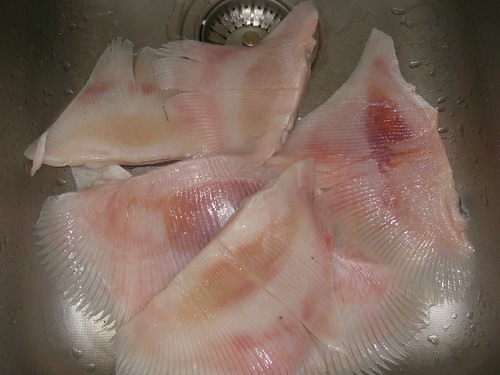
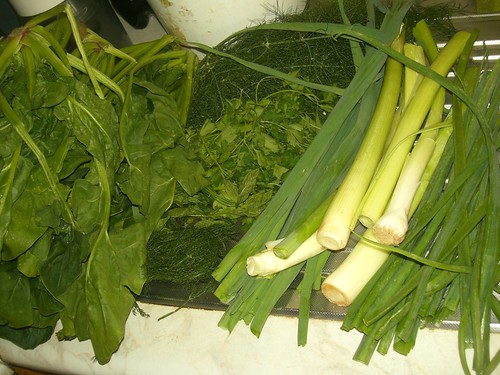
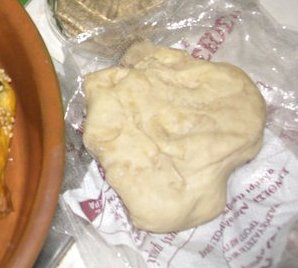
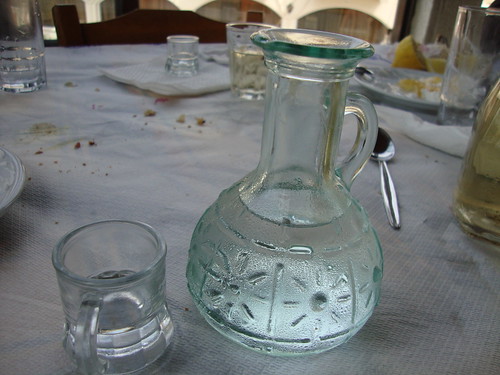
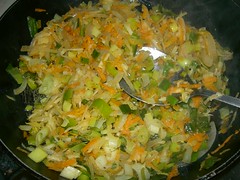
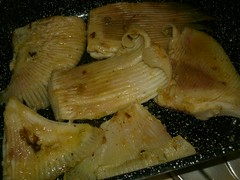
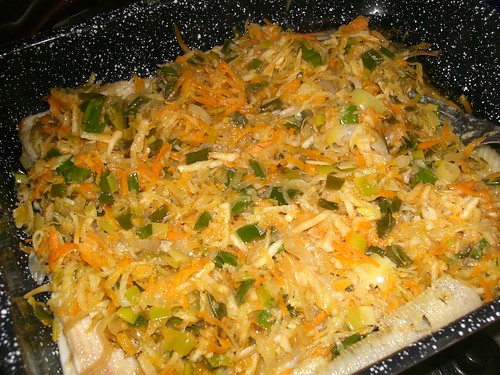



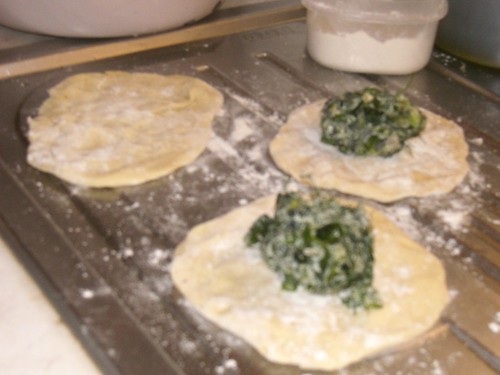
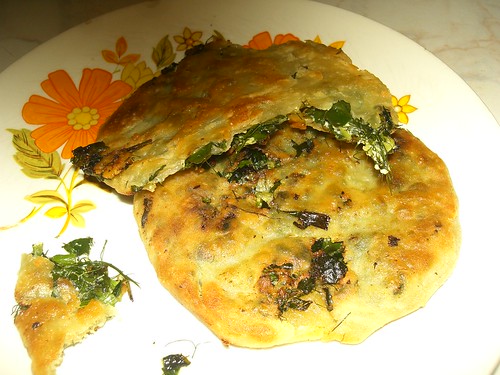
i'm sick and tired of hearing about the way rich lazy greeks have wrecked the country - they are a small minority compared to the rest of the population
ReplyDeletehere is an article (published yesterday) with a more truthful outlook of life in greece from now on:
http://www.independent.co.uk/opinion/commentators/sofka-zinovieff-misunderstood-and-insulted-we-are-left-with-the-taste-of-bitter-oranges-1959639.html
even though it may considered slightly old, the author's book Eurydice St is one of my 'best-reads', with its modern look at the state of Greece
You've given me an idea for what to cook tonight. I'll have to do my best to make the fish plaki with what I can get from the supermarket. I'm very jaded of palate these days, bored stiff with my limited repertoire, so I'll give this a go.
ReplyDeleteNice article Maria - I think a little bit of austerity will do Greece some good - they have been living beyond their means for a long long time. It is also about time that everyone paid their taxes. Everyone seems to turn a blind eye - but hopefully that will come to an end.
ReplyDeletei don't like skate wings so much, but your little pastries look delicious. I think Greeks became lazy the minute they acquired more money and could afford more things. Hopefully the new "era" of Greek poverty will sober us up.
ReplyDeleteMy father eats fiddleheads with lemon and olive oil, and my mother eats hers the traditional local way, with butter and vinegar, and they sit around and argue over which is better, and try to get me to choose a side - I eat them both ways! Fiddlehead season has recently started here, several weeks ahead of schedule - we've had the warmest April on record, and it was in the high twenties yesterday (31 today!!!), so everything has started growing way earlier than usual. I might buy some myself to cook (they're a wild product harvested by hand, so they're sold by whoever picks them out of coolers from the back of a truck parked on the side of the road), but Chris isn't a fan of them.
ReplyDeleteI don't think my father ever ate fiddleheads before he moved to Canada, though.
Also, your post really makes me want to make some pites!
I love skate, it's plentiful here as well and delicious plus easy to prepare. Your "plaki" approach is one I have to try.
ReplyDeleteGreeks are perhaps the MOST productive and industrious people! In a big IT company that my boyfriend works here in Holland, his boss always says that he wish he had more Greeks working at the company (there are already 2 there) because they are so good at what they do and they are conscientious employees. Anyway...
ReplyDeleteI like the way you prepared the fish Maria, which ultimately was different from my recipe. I don't enjoy just seared fish either, in the recipe the instruction is pan-fried (the fish is cooked for enough time), not seared :)
I've never had skate either, it's one fish I definitely want to try soon.
Magda
This truly is a labor of love. I felt like I was sitting in the kitchen with you. When you said, I would have to buy imported fennel to try this dish, even though I knew that their seasonal quality would be compromised. Another nagging feeling in my mind was the fact that in the same week, I had already bought some celeriac (celery root) to make another foriegn-inspired dish, and I felt that it would weigh down unnecessarily to my carbon footprinting of the world.
ReplyDeleteI felt ashamed and said, "why hadn't I thought like this?". Maria mou, your family is so fortunate to have a wonderful creative cook, eco-friendly and mindful mother and smart too! Happy is how this post made me.
Penelope
Sounds like you put your recipe inspiration to good use and cleared out the fridge at the same time. It's great to be able to get so many greens from the garden - I'm jealous.
ReplyDeleteMaria,
ReplyDeleteSo few Greeks living there think like you and your family.
For example: one of my cousins has been saying for 5 years now that she wants to travel for a year -- a pretty luxurious dream, you might say. But her parents bought her apartment, she doesn't cook (goes home to eat mama's food) and earns about 1500 euro a month. Perhaps not a fortune, but with no rent or groceries to pay, there's no reason why she couldn't save up and go, at least for a little bit. But when I mentioned this, she said "Oh, I'm not the saving type". And then proceeded to go on about how such a mentality is clearly from my Canadian upbringing.
Of course I corrected her and told her that my παππού would be very offended that he had nothing to do with me knowing that you need to live within your means and save your money...
I found my trip to Greece last summer so depressing because of the lack of responsibility felt by people my age (mid 20s) and general feeling of entitlement, even as they admitted they did nothing for themselves or their country.
Part of the reason I read your blog (aside from the wonderful recipes and great storytelling!) is because people like you give me hope for Greece. Thank you.
thank you christina for pointing out that there are these badly brought up greeks - they often make me feel that i am so ungreek, as i stand out as a minority among them
ReplyDeletethere is hope for greece, but i know this sounds harsh: it will take 2 generations of austerity measures to make greeks realise that they have to live differently - this generation has to work within the austerity plans, and the next generation has to learn to work like their parents, so that the message sinks in - the grandparents were the one who were to blame for it all, so everyone will be better in the long run
Visiting from the Foodie Blogroll and your recipes look wonderful. I've enjoyed reading your previous posts and look forward to more. Thank you for such an inspiring blog :)
ReplyDeletewonderful essay Maria.
ReplyDelete...and you are quite correct in your comment about taking a generation, or two, for true change to set in.
I love Hellas and always will!
Skate wings sound interesting; never had them. The fried kind looks more attractive to me. I think I would enjoy it.
ReplyDeletedo these marathokalitsounia come out seamless because after you make the pouch, you then turn them upside down on the tapsi??
ReplyDeletecarole:)
Maria, this pastry was the EASIET thing to make!!
ReplyDeletei used my hand mixer w/dough blades on it till almost ready, then kneaded a bit more flour in.
flaky and delicious too!
a big THANKS!
carole